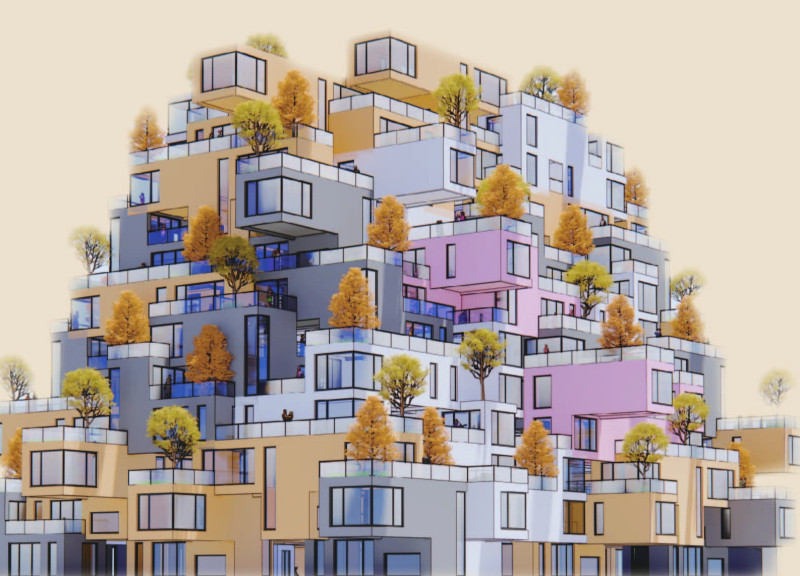5 key facts about this project
The Green Zone is a thoughtful initiative focused on solving the affordable housing issue in Toronto. Located in an urban environment, it aims to provide practical housing options for a range of people, including families, couples, and individuals. The design is built around the ideas of flexibility, community involvement, and resilience to environmental challenges, all of which create a comprehensive approach to modern city living.
Model Types
Different types of housing are a key feature of the Green Zone. Single Spaces include 36 units designed to offer privacy and reduce visual interference. DINK Spaces are aimed at couples with two incomes but no children, providing 28 units that cater to their particular lifestyle. The Nuclear Family Spaces consist of 18 houses intended for traditional family structures, creating environments that support family activities. Activity Spaces consist of 8 units, designed as shared areas that include fitness rooms, reading rooms, and co-eating spaces. These communal areas are meant to encourage socializing and interaction among residents.
Adaptability and Context
Adaptability is essential in the Green Zone, allowing the design to fit into both suburban and urban settings. This flexibility means the housing can be adapted to meet the specific needs of different neighborhoods while keeping a consistent architectural style. The design shows an understanding of context and the importance of creating spaces that fit well within their environment.
Environmental Considerations
Environmental resilience is heavily integrated into the design. By including features that can withstand challenging weather conditions such as rain and snow, the Green Zone demonstrates a commitment to durability and long-term sustainability. The design also focuses on thermal efficiency, aiming to provide comfortable living conditions while reducing energy use. This focus on energy management aligns with modern practices in sustainable architecture, making it relevant to current urban housing needs.
The Green Zone includes shared spaces that enhance daily life for residents, encouraging a sense of community and togetherness. The design promotes interaction through communal areas and outdoor platforms, contributing to a lively neighborhood feel. This approach distinguishes the Green Zone as a practical response to the challenge of affordable housing in urban areas.



















































